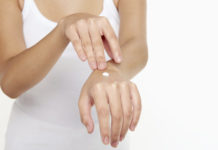Most of us are well aware of how bad too much sun exposure is for the skin. Apart from predisposing you to skin cancer, it can also cause skin damage and make you look older faster.
Because of how detrimental UV rays are, it’s essential that we always remind our patients to wear their sunscreens.
But, that shouldn’t end there.
Because mistakes can happen, you should be clearer about the proper use of sunscreens. As a guide, here are some of the most common misconceptions about UV rays and sunscreens you need to talk to your patients about.
1False: Wearing darker sunglasses offer more protection

The color or darkness of your sunglasses has nothing to do with its ability to filter out UV rays. You can wear glasses with very dark tint but, without adequate protection, it can still allow excessive UV rays to get into your eyes.
For your eyes’ safety, choose a pair of sunglasses that can filter at least 98% of UVA and UVB rays. Purchase lenses that have UV coating or buy polycarbonate lenses which have built-in UV coverage.
Photochromatic lenses make a good choice, too. This type of lens transitions from clear to dark once exposed to UV rays.
2False: You can’t get sunburn while you are in the water

Frankly, water can provide protection against UV rays but it’s only minimal. In fact, if you submerge your body half a meter deep under the water, UV rays can still reach your skin. The part of your body that is above water is also exposed to more intense radiation because of the water’s reflection.
3False: You can sunbathe as long as you want so long as you have sunscreen on

Sunscreen lotion isn’t meant to increase the time you can spend under the sun. It’s supposed to give you added protection during those times you can’t stay away from the sun.
And even if you take frequent breaks from sunbathing, it won’t really affect the damage your skin will get. Radiation exposure tends to be cumulative.
If you want to lessen the harmful effects of the sun, reduce your exposure.
4False: As long as you don’t feel the hot rays of the sun, you won’t experience sunburn
UV radiation is different from infrared radiation. UV radiation, technically, can’t be felt so you can still get sunburnt even if you don’t feel any warmth on your skin.
5False: A cloudy day can save you from getting sunburn

Even if it’s a cloudy day, do not put your skin’s health at risk. UV rays can penetrate clouds, fog and mist. At certain times, the rays can even be magnified by reflecting off the sides of clouds.
Don’t feel safe just because you can’t see the sun.
6False: All sunscreen lotions are the same

There are two types of UV rays.
UVA rays are what can penetrate your skin’s deeper layers. They are responsible for premature skin aging, wrinkling and lower immune system. UVB rays, on the other hand, are the usual culprits behind sunburn. They are linked closely to cases of skin cancer.
Much like how UV rays differ, not all sunscreens are the same. In essence, you can’t rely on a product that’s meant to protect you against UVA to defend you from UVB rays, too. For your optimum protection, pick a sunscreen that can provide broad spectrum protection.
7False: You should only avoid sun exposure at noon
The sun’s UV radiation is at its strongest between 10 am to 4 pm. During these hours, it’s best to avoid direct sun exposure. If going out is inevitable, use an umbrella or walk under the shade to reduce exposure.
8False: You don’t have to reapply your sunscreen

Most sunscreens can last for about two hours on the skin. At times, sunscreens may not even last that long. As your skin uses up the ingredients, your protection against the sun decreases. In addition to that, swimming, sweating and getting wet can also make your sunscreen wear off faster.
If you know you’ll be exposed to these conditions, make sure to reapply your sunscreen every two hours and wait for it to soak into your skin before diving into the water again.
9False: You rely on your makeup’s SPF
Given how important sun protection is, it’s no wonder cosmetics are now being formulated with SPF, too. While they can protect your skin, you shouldn’t rely on them completely.
Just take your foundation as an example. Even if it has the same SPF as your sunscreen, the amount of foundation you apply on your skin is nowhere near the amount of sunscreen recommended for the face, which is about a nickel-sized dollop.
In addition to your makeup’s SPF and your sunscreen, you should also use protection when you’re outdoors. Wear a hat, your sunglasses and protective clothing before heading out.
10False: Getting a higher SPF will give you better protection

Generally speaking, a sunscreen with SPF 30 can be enough to block out 96% of UVB rays. That is, if it’s applied properly and in the right amount. A sunscreen with a higher SPF will only give you very little difference.
SPF 50, for example, can block out 98% of UV rays while SPF 75 can provide 99% protection. There’s no sunscreen that can block out 100% UV rays.




















